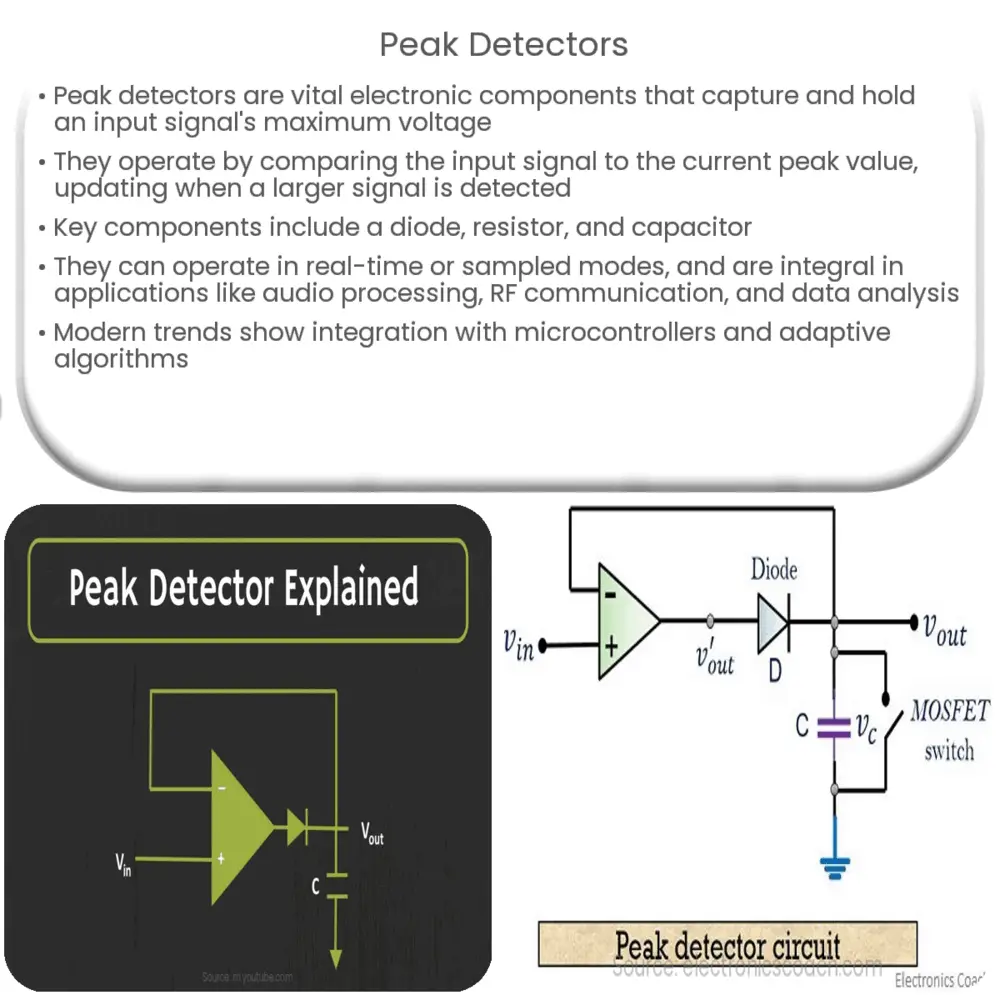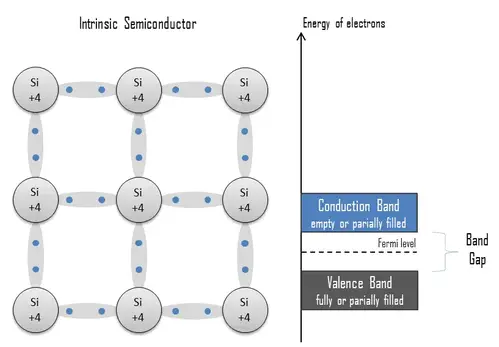Explore the fundamentals of peak detectors, their types, design considerations, limitations, and applications in this comprehensive guide.

Introduction to Peak Detectors
A peak detector is an essential electronic circuitry component that captures and holds the maximum voltage level of an input signal. It is the cornerstone of many signal processing applications, including audio processing, RF communication, and data analysis.
Principle of Operation
Essentially, a peak detector operates by continuously comparing the input signal with the current peak value and updates the peak value when a larger input signal is encountered. The basic components of a peak detector circuit are a diode, a resistor, and a capacitor. The diode controls the direction of the current, the resistor allows the capacitor to discharge, and the capacitor stores the voltage.
Types of Peak Detectors
- Positive Peak Detector: This type captures the positive peak of the input signal.
- Negative Peak Detector: As opposed to the positive peak detector, this type captures the negative peak of the input signal.
- Peak-to-Peak Detector: This type of detector captures both the positive and negative peaks of the input signal.
Real-time and Sampled Peak Detection
The operation mode of a peak detector can be either real-time or sampled. A real-time peak detector processes the input signal continuously and reacts instantly to changes, making it suitable for applications where timely response is critical. A sampled peak detector, on the other hand, takes samples of the input signal at specific intervals, reducing the complexity and power consumption at the expense of a slightly delayed response.
Peak Detector with Reset
Some peak detector designs incorporate a reset functionality, enabling the circuit to restart the peak detection process. This feature can be crucial in scenarios where the signal varies over time, or the peak needs to be refreshed frequently.
Applications of Peak Detectors
- Audio Processing: Peak detectors are used in audio processing to detect the peak level of audio signals for volume normalization or dynamic range compression.
- RF Communication: In RF communication, peak detectors are used to measure the power level of signals.
- Data Analysis: Peak detectors find applications in data analysis for identifying maximum values in data streams.
This concludes the first part of the discussion on peak detectors, outlining their principle of operation, types, modes, and some applications. The next section will dive deeper into their design, operation, and various considerations for their use.
Design Considerations of Peak Detectors
Designing a peak detector involves a careful balance between response time and hold time. The response time is dictated by how quickly the detector can respond to a sudden change in input voltage. It’s primarily determined by the time constant, which is the product of the resistance and capacitance in the circuit. A smaller time constant provides a faster response but results in a shorter hold time.
The hold time, or how long the peak value can be maintained without significant decay, is another crucial aspect. A larger time constant will offer a longer hold time but at the expense of slower response time. Hence, designers must find a suitable compromise between these two parameters based on the specific requirements of their application.
Limitations and Challenges
While peak detectors offer significant advantages, they are not without limitations. One such limitation is the diode forward voltage drop, which can introduce an error in the detected peak value. To mitigate this, precision peak detectors often use operational amplifiers or ‘op-amps’ with diodes in the feedback loop.
Another challenge is the leakage current from the holding capacitor, which can result in a gradual decrease of the stored peak value. Modern designs use high-quality capacitors with low leakage current to address this issue.
Emerging Trends
As technology evolves, so too do the trends in peak detector designs. One such trend is the integration of peak detectors into microcontrollers and digital signal processors. Another trend is the use of adaptive algorithms that can dynamically adjust the response and hold times based on the characteristics of the input signal, enhancing the detector’s accuracy and versatility.
Conclusion
In summary, peak detectors are an integral component in numerous electronics applications, enabling the tracking and storage of the maximum voltage level in a signal. With a clear understanding of their operating principle, types, and design considerations, one can efficiently utilize them in various applications, from audio processing to data analysis. Despite their limitations, peak detectors’ versatility and indispensability make them a constantly evolving technology. As advances continue to be made, it’s expected that new designs and applications for peak detectors will emerge, solidifying their role in the future of electronics and signal processing.



